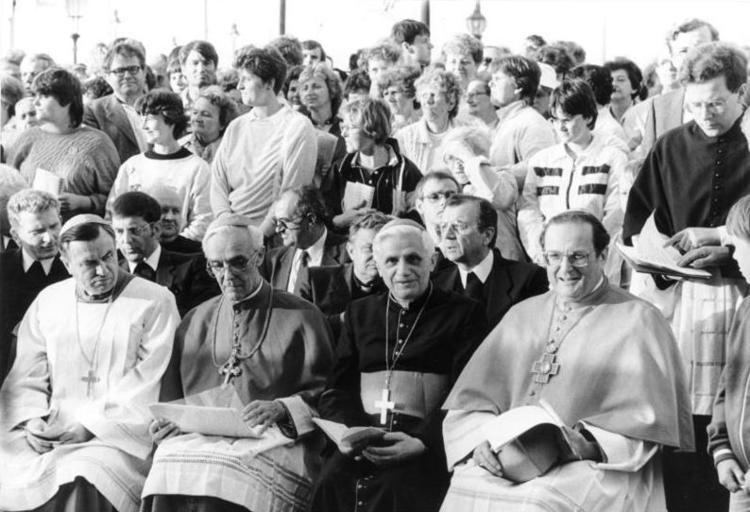 | ||
The situation of Christianity in East Germany was characterized by an enduring persecution of religious believers by the Communist government of East Germany.
Contents
Parishes cut off from dioceses
After World War II, the Catholics in the zone occupied by the Soviet army found themselves under a militant atheist government. Many parishes were cut off from their dioceses in the western part of Germany. The Soviet zone eventually declared itself a sovereign nation, the German Democratic Republic (GDR).
The GDR's constitution ostensibly proclaimed the freedom of religious belief, while "Freedom of religion and liberty of conscience did not in reality exist, and the exercise of religion was obstructed in every conceivable way".
Traditionally Protestant areas
Most of the people in the territory of the German Democratic Republic were Protestants. With exception of the Eichsfeld, a small Catholic area in the northwestern part of Thuringia, which was a former property of the archdiocese of Mainz, Catholics were a small minority right from the start of Communist rule.
Persecution of the faithful
Catholics and Protestants suffered an ideologically-based onslaught from the East German leadership in the German Democratic Republic. Both were attacked as "outdated survivals of a feudal era", to be replaced by the “Socialist Man.” Both had their institutions repressed and closed down, their communications censored, their youth work curtailed, their social outreach diminished, and were made victims of the repressive secret police, the Stasi. They were accused of being "agents of Western Imperialism". The state-run Propaganda apparatus was continuously used to denounce and denigrate the churches.
The East German leadership quickly developed a two-pronged approach which became a permanent feature of the regime’s Kirchenpolitik. On the one hand, they made use of the repressive and surveillance tactics to induce obedience and compliance with their unilateral decrees. On the other hand, they also practised a policy of conciliation, attempting to lure the churches, and particularly their leaders, into affirming their loyalty to the regime or making public political declarations which could serve the regime’s search for legitimacy both at home and abroad. But the main aim remained to marginalize the churches and finally to hasten their decline.
Catholic Minority
In 1950, 13% of the population were Catholics (versus 85% Protestants). Although about 1.1 million citizens, half of East Germany's Catholic population, left the GDR, in 1989 there were still about one million Catholics, about 6% of the population (versus 25% Protestants).
The Socialist Unity Party’s hostility to Catholicism led to increased propaganda, administrative intervention and political attacks. From their point of view “political Catholicism” was only a facade “paving the way for German fascism.” The East German Catholic leaders refused to join with some of the West German bishops in calling for outright confrontation with the Communist regime. Discretion rather than valour was of the utmost importance.
Subsequently, the regime intensified its surveillance of the churches in search for proof of espionage. Over the years the network of informers for the Stasi infiltrated the clergy’s ranks and sought compromising information from ordinary church members. But at no point were the security services, or their political leaders in the SED, able to steer the Catholic Church to follow their dictates. Catholics in the GDR soon learnt enough about the Stasi’s operations to adopt a strong sense of caution against any intimidation. The Church as a whole retreated into a position of political abstinence, which was maintained until 1989.
